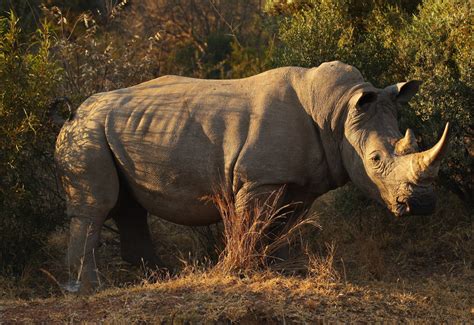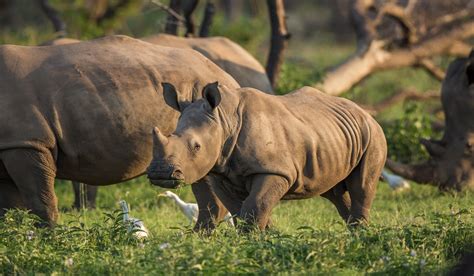The white rhinoceros, once a majestic symbol of Africa’s wildlife, faces an uncertain future due to severe declines in population. Historically, these magnificent creatures roamed vast landscapes, but today, their existence is under severe threat. Understanding the key factors leading to their decline, including poaching and habitat loss, is crucial in addressing the crisis. This article delves into the historical context of the white rhinoceros, examines the major causes of their decline, and explores the profound impact on ecosystems. Additionally, it highlights the conservation efforts underway, evaluates current strategies, and underscores the role of international organizations. By reflecting on recent successes and setbacks, we aim to outline the future outlook and inspire ways individuals can contribute to the survival of this iconic species.
ugodj.com will lead an exploration of this topic in detail.
1. Why: Historical Context of the White Rhinoceros
The white rhinoceros, once a common sight across Africa, has suffered a devastating decline due to multiple threats. Historically, these majestic creatures thrived in the savannas and grasslands of eastern and southern Africa, where they played a vital role in maintaining the balance of their ecosystems. There are two subspecies: the Southern white rhino, which was brought back from the brink of extinction, and the critically endangered Northern white rhino. The Northern white rhino population has been decimated by relentless poaching for its horns and habitat loss. By the late 20th century, only a handful of individuals remained, and today, only two females survive, both unable to reproduce naturally. Recognizing this historical context is crucial to comprehending the gravity of the crisis and the urgent need for conservation action.

2. Why: Major Causes of Decline
The white rhinoceros faces a dire situation, its dramatic decline driven by multiple, interconnected threats. Poaching, fueled by the persistent demand for rhino horns in traditional medicine and as a status symbol, stands as the primary cause. The belief, unfounded in science, that keratin-based horns possess medicinal properties fuels a lucrative black market, incentivizing illegal hunting. Habitat loss, another critical factor, stems from expanding agricultural practices, urbanization, and human encroachment, shrinking the white rhino’s natural range. This habitat fragmentation limits access to vital resources, such as food and water. Complicating the situation further, political instability and inadequate law enforcement in certain regions hinder the implementation of effective conservation measures. Climate change adds to the pressure, altering habitats and food availability. To ensure the white rhinoceros’s survival, a multifaceted approach to conservation is imperative, demanding global awareness and concerted action to address these intertwined threats.

3. Why: Impact on Ecosystems
The decline of the white rhinoceros has far-reaching consequences for the ecosystems they once ruled. As large herbivores, white rhinos are crucial to shaping their habitat. Through their grazing of grasses and shrubs, they maintain equilibrium among plant species, preventing any single type from dominating the ecosystem. Their feeding habits create open areas that benefit other wildlife, including smaller herbivores and various bird species that rely on these spaces for feeding and nesting. The absence of white rhinos disrupts this delicate balance, resulting in the overgrowth of certain plants and the decline of species dependent on the open landscapes rhinos create.
The disappearance of rhinos triggers a domino effect within the ecosystem, impacting predator-prey dynamics and altering the makeup of plant and animal communities. This decline in biodiversity and habitat complexity weakens the ecosystem’s ability to withstand change, making it difficult for other species to adapt to environmental fluctuations. This disruption highlights the interconnectedness of all species and underscores the vital role keystone animals, such as the white rhino, play in maintaining the health and stability of their ecosystems.

4. How: Conservation Efforts Initiated
White rhinoceros conservation has employed a comprehensive approach, encompassing both immediate protection and long-term sustainability. Early efforts involved establishing protected areas and national parks to safeguard their habitat from poaching and human encroachment. To curb illegal hunting, anti-poaching measures were implemented, including increased patrols and the utilization of advanced technology like drones and camera traps. Moreover, conservationists have actively engaged in public awareness campaigns, educating communities about the significance of white rhinos and the perils they face.
International collaboration formed another key strategy, uniting organizations and governments in support of rhino conservation programs. This involved strengthening local law enforcement and bolstering anti-poaching legislation. Furthermore, scientific research was given priority to deepen understanding of rhino behavior, genetics, and health, which then informed targeted conservation strategies.
To safeguard the critically endangered Northern white rhino, scientists explored cutting-edge reproductive technologies, including in vitro fertilization and artificial insemination, to preserve the genetic material of the dwindling population. These early conservation efforts established a foundation for more comprehensive strategies aimed at tackling the persistent threats facing the white rhinoceros.
5. How: Current Conservation Strategies
Efforts to conserve the white rhinoceros are multifaceted and responsive, tackling both immediate dangers and the species’ long-term viability. To combat poaching, strengthened anti-poaching initiatives are implemented. These include advanced surveillance technologies, increased ranger patrols, and community engagement programs that encourage local involvement in conservation efforts. Innovative technologies, such as GPS tracking and biometric monitoring, contribute to rhino protection and provide crucial data about their movements and health.
Protecting rhino habitat remains a top priority, with ongoing work to enlarge and link protected areas. This ensures rhinos have enough resources and secure places to live. Working together with local communities, we aim to develop sustainable land management practices that lessen conflict between people and wildlife and promote harmonious coexistence.
The Northern white rhino, facing an imminent extinction threat, is the subject of groundbreaking reproductive technologies. These innovative techniques include in vitro fertilization utilizing preserved sperm and eggs, as well as the creation of a potential rhino embryo using surrogate mothers from the Southern white rhino population. Efforts to secure additional funding and international support remain paramount, alongside ongoing research to enhance the effectiveness of these reproductive methods and ensure their ultimate success.
These strategies, when combined, offer a holistic plan to tackle the intricate challenges facing the white rhinoceros and work towards its continued survival.
6. How: Role of International Organizations
International organizations are critical to the conservation of the white rhinoceros, acting as vital supporters and coordinators for worldwide conservation efforts. Organizations like the World Wildlife Fund (WWF), the International Rhino Foundation (IRF), and Rhino Conservation Botswana dedicate themselves to addressing the multifaceted threats faced by this endangered species. Their contributions include financial support, technical expertise, and strategic direction to local conservation projects and field operations.
These organizations foster international cooperation by uniting governments, non-governmental organizations, and local communities in the development and implementation of effective conservation strategies. They also engage in awareness campaigns and educational initiatives to emphasize the significance of rhino conservation and combat the illegal wildlife trade.
Moreover, international organizations play a crucial role in establishing and enforcing policies and agreements designed to safeguard rhinoceros populations. One example is their support for the implementation of the Convention on International Trade in Endangered Species of Wild Fauna and Flora (CITES), which regulates and monitors the trade of rhino products.
International organizations are crucial to the ongoing efforts to protect the white rhinoceros and secure its future. They achieve this by building global partnerships and gathering essential resources.
7. What: Recent Successes and Setbacks
Recent successes in white rhinoceros conservation include notable strides in increasing the Southern white rhino population, which has grown from fewer than 100 individuals in the 1900s to over 18,000 today. Efforts such as enhanced anti-poaching measures and habitat protection have contributed to this recovery. Additionally, the development of advanced reproductive technologies, like in vitro fertilization, has shown promise for the critically endangered Northern white rhino, with successful attempts to create embryos from stored genetic material.
However, setbacks persist. The Northern white rhino population remains at a standstill, with only two females left and no viable males to reproduce naturally. Poaching remains a significant threat, with occasional high-profile cases highlighting the ongoing risk. Climate change and habitat fragmentation continue to challenge conservation efforts, impacting both rhino populations and their ecosystems. These mixed outcomes underscore the need for sustained and adaptive conservation stra
8. What: Future Outlook and Goals
The future outlook for the white rhinoceros is cautiously optimistic but remains fraught with challenges. For the Southern white rhino, conservation goals include continuing to expand protected areas and strengthen anti-poaching measures to ensure the population remains stable and can potentially grow further. Efforts to enhance habitat connectivity and address human-wildlife conflicts are also crucial for long-term sustainability.
The situation for the Northern white rhino is more complex, with the primary goal being to develop and implement successful reproductive technologies. The focus is on advancing in vitro fertilization and embryo transfer techniques to create viable offspring. Researchers and conservationists are working to secure additional funding and support to drive these efforts forward. The potential for creating a viable Northern white rhino population hinges on overcoming significant scientific and logistical hurdles.
Globally, the conservation community aims to bolster international cooperation and strengthen policies against wildlife trafficking. Increased public awareness and involvement are essential to sustaining these efforts. The overarching goal is to ensure the survival of both subspecies of white rhinos by addressing current threats, enhancing habitat protection, and supporting innovative conservation strategies to secure a future for these iconic animals.
9. What: How Individuals Can Contribute
Individuals can play a significant role in the conservation of white rhinoceroses through various actions and support efforts. One of the most impactful ways is by raising awareness about the plight of white rhinos and the threats they face. Sharing information on social media, participating in educational programs, and discussing the importance of rhino conservation with others can help build broader public support.
Financial contributions to reputable conservation organizations are also crucial. Donations can support anti-poaching measures, habitat protection, and research into reproductive technologies. Individuals can also participate in or organize fundraising events to support these efforts.
Volunteering with local or international conservation groups offers another avenue for involvement. Many organizations welcome volunteers to assist with fieldwork, administrative tasks, or community outreach.
Additionally, supporting sustainable and ethical products can reduce the demand for wildlife trade and promote responsible practices. For those who travel, choosing eco-friendly tourism options that contribute to wildlife conservation can also make a difference.
Advocacy is another powerful tool. Individuals can engage in advocacy efforts to influence policy and support legislation that protects endangered species and combats illegal wildlife trade. By taking these actions, individuals contribute to the broader effort to secure a future for white rhinoceroses and protect biodiversity.
The white rhinoceros faces significant challenges, but concerted conservation efforts offer hope for its future. By understanding the historical context, addressing major threats, and implementing innovative strategies, we can make strides towards ensuring the survival of this iconic species. While recent successes and setbacks highlight the complexity of the issue, ongoing support from international organizations and individuals is crucial. Each of us can contribute by raising awareness, supporting conservation initiatives, and advocating for policies that protect wildlife, helping to secure a future for the white rhino.
ugodj.com

